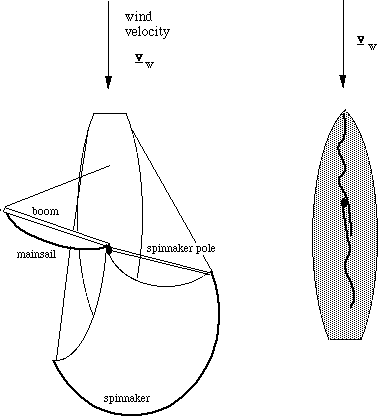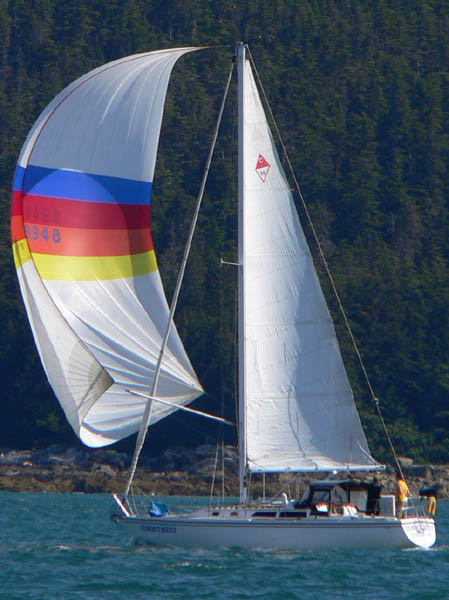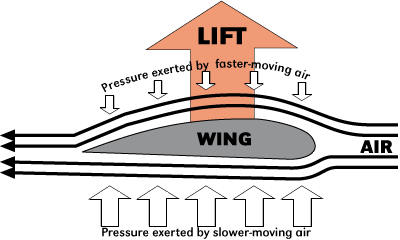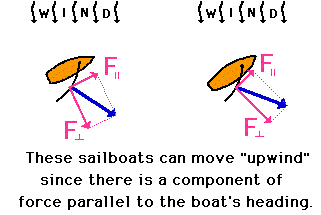
Web Project by Ben Renshaw, PHYS-104
Home
The Sail Boat
- Buoyancy
- Center
of Gravity
- Sailing
- Navigation
- Anchors
Bibliography

http://www.phys.unsw.edu.au/~jw/sailing.html
Sailing with the wind
behind you: it is easy to see that, when
sailing downwind, the wind blows into the sails
and exerts a forces on them. The sails push back
against the wind with an equal but opposite force. The
diagram above, as well as the picture below, shows a spinnaker. A spinnaker is a
large sail only used when sailing downwind. The
increased surface area of the sail allows for
increased force to be applied by the wind.
Sailing upwind: A sailboat cannot sail directly into the wind as seen in the above diagram; the sails will just flail back and forth.
Sailing upwind: A sailboat cannot sail directly into the wind as seen in the above diagram; the sails will just flail back and forth.

http://www.elisetomlinson.com/sailing-alaska.html
Sailing towards the wind: much like an airplane wing turned upright, the
sail of a sailboat creates lift.The difference in
pressure has to do with Bernoulli's principle: an
increase in speed of a fluid creates a decrease in
pressure.

http://www.caranddriverthef1.com/
In the diagram below we can see the two component
forces adding up to the resultant force. Since the
keel is under the boat it is harder to visually
understand that it is also creating a force. The
force it is creating is F perpendicular. The wind is
hitting the sails and the boat, trying to move it
downwind. The keel prevents this from happening by
pushing against the water and adding to the force
created by the sails.

http://www.physicsclassroom.com/class/vectors/u3l3b.cfm
Now that we better understand how the sailboat is
moving we need to learn about velocity made good, or
more commonly, "vmg." If a boat was trying to sail
westward against a west wind the boat would need to
alternate between sailing north west and south west.
This is called tacking. The boat should start out
pointing as close to west as it can. But, the boat
will need to veer off at more of an angle in order
create more pressure onto the sails. So, there is a
give and take; in order to go faster you must veer
from the oncoming wind, but this points you at a
less advantageous angle towards your destination.
Fortunately, it becomes very apparent when you reach
vmg because there is a characteristic jerk of the
boat followed by acceleration.
| |
|